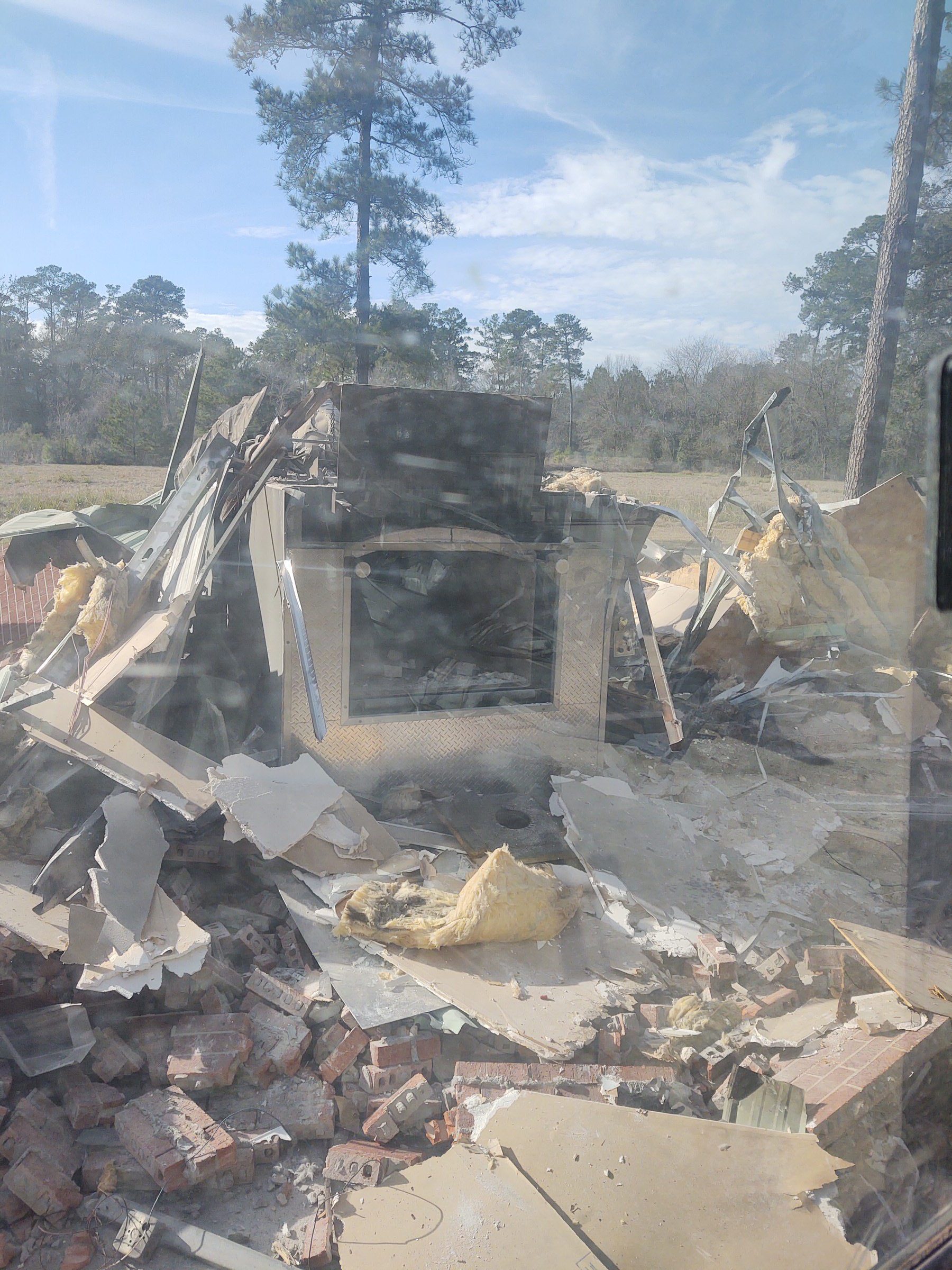Report on FEMA Changes and Implications for Sustainable Development Goals (SDGs)
Introduction
The Trump administration has announced plans to phase out the Federal Emergency Management Agency (FEMA) after the 2025 hurricane season, raising concerns about the future of disaster recovery assistance for homeowners and communities. This report analyzes the potential changes to FEMA, the types of aid it provides, and the implications for sustainable development, emphasizing the relevance to the United Nations Sustainable Development Goals (SDGs).
Proposed Changes to FEMA
- Phasing Out FEMA: President Donald Trump declared intentions to start phasing out FEMA after the 2025 hurricane season (June 1 to November 30), proposing to reduce disaster aid funding and redistribute it directly from the President’s office.
- Budget Cuts: The Department of Homeland Security (DHS) proposed a $646 million budget cut for FEMA in fiscal year 2026, alongside ending a disaster prevention and mitigation grant program, returning $882 million to the Treasury.
- Shift in Responsibilities: The administration’s plan would increase the financial and operational burden on states and municipalities to manage disaster recovery efforts.
- Agency Reorganization: FEMA is expected to be restructured under the Department of Homeland Security with a different operational focus.
Expert Concerns
- Experts warn that these changes could hinder homeowners’ ability to recover from natural disasters.
- Senator Raphael Warnock criticized the dismantling of FEMA as reckless and lacking a clear alternative strategy.
- Risk management professionals emphasize that FEMA is not a replacement for comprehensive home insurance, placing more responsibility on individuals to prepare for disasters.
Types of Aid Provided by FEMA
FEMA offers various forms of assistance designed to supplement, not replace, private insurance coverage:
- Individual Assistance Grants: Small grants for uninsured losses, such as temporary housing costs. The average payout from 2010 to 2019 was approximately $3,522.
- Disaster Loans: Low-interest loans through the Small Business Administration (SBA) for losses not covered by insurance or grants. Interest rates can be as low as 2.688% for homeowners and renters, with terms up to 30 years.
- State Emergency Management Support: FEMA typically assists state agencies post-disaster, but future cuts may increase states’ financial burdens.
Implications for Sustainable Development Goals (SDGs)
The proposed changes to FEMA have significant implications for several SDGs, including:
SDG 1: No Poverty
- Reduced federal disaster aid may increase financial vulnerability for low-income households affected by natural disasters.
- Increased reliance on state resources could exacerbate inequalities in disaster recovery assistance.
SDG 11: Sustainable Cities and Communities
- Cutbacks in mitigation grants may weaken community resilience against disasters.
- States and municipalities may face challenges in maintaining sustainable urban development without adequate federal support.
SDG 13: Climate Action
- FEMA’s reduced capacity could hinder effective response to climate-induced natural disasters, undermining efforts to adapt to climate change.
- Experts highlight the need for enhanced preparedness and risk management at individual and community levels.
SDG 17: Partnerships for the Goals
- Collaboration between federal, state, and local agencies is critical for effective disaster response; budget cuts may strain these partnerships.
- Nonprofit organizations and research institutions may need to play a larger role in climate risk assessment and recovery efforts.
Recommendations for Citizens and Policymakers
- Individual Preparedness:
- Review and update home insurance policies to avoid underinsurance and consider additional coverage such as flood insurance.
- Maintain emergency supplies including food, water, batteries, and important documents.
- Follow evacuation orders promptly to ensure safety during disasters.
- State and Local Governments:
- Develop robust disaster recovery plans and allocate sufficient resources to support affected populations.
- Enhance community resilience through sustainable urban planning and infrastructure improvements.
- Federal Government:
- Ensure that any restructuring of FEMA maintains effective disaster response capabilities aligned with SDG targets.
- Promote partnerships with states, nonprofits, and private sectors to strengthen disaster preparedness and recovery.
Conclusion
The proposed changes to FEMA pose challenges to disaster recovery efforts and have broad implications for sustainable development. Emphasizing preparedness, insurance coverage, and intergovernmental cooperation is essential to uphold the principles of the Sustainable Development Goals, particularly in reducing poverty, building resilient communities, and addressing climate change impacts.
1. Sustainable Development Goals (SDGs) Addressed or Connected to the Issues Highlighted in the Article
- SDG 11: Sustainable Cities and Communities
- The article discusses disaster recovery and preparedness at the community and state levels, emphasizing resilience to natural disasters.
- SDG 13: Climate Action
- The focus on hurricane seasons, disaster response, and climate risk highlights the need for climate adaptation and mitigation strategies.
- SDG 1: No Poverty
- FEMA’s role in providing financial aid and grants to individuals affected by disasters relates to reducing poverty and vulnerability.
- SDG 3: Good Health and Well-being
- Disaster preparedness and response impact health and safety during emergencies.
- SDG 16: Peace, Justice and Strong Institutions
- The article discusses government agency reforms and the role of institutions in disaster management.
2. Specific Targets Under Those SDGs Identified Based on the Article’s Content
- SDG 11: Sustainable Cities and Communities
- Target 11.5: Significantly reduce the number of deaths and the number of people affected by disasters, including water-related disasters.
- Target 11.b: Increase the number of cities and human settlements adopting and implementing integrated policies and plans towards inclusion, resource efficiency, mitigation and adaptation to climate change.
- SDG 13: Climate Action
- Target 13.1: Strengthen resilience and adaptive capacity to climate-related hazards and natural disasters in all countries.
- Target 13.3: Improve education, awareness-raising and human and institutional capacity on climate change mitigation, adaptation, impact reduction, and early warning.
- SDG 1: No Poverty
- Target 1.5: Build the resilience of the poor and those in vulnerable situations and reduce their exposure and vulnerability to climate-related extreme events and other economic, social and environmental shocks and disasters.
- SDG 3: Good Health and Well-being
- Target 3.d: Strengthen the capacity of all countries for early warning, risk reduction and management of national and global health risks.
- SDG 16: Peace, Justice and Strong Institutions
- Target 16.6: Develop effective, accountable and transparent institutions at all levels.
- Target 16.7: Ensure responsive, inclusive, participatory and representative decision-making at all levels.
3. Indicators Mentioned or Implied in the Article to Measure Progress Towards the Identified Targets
- Indicator for SDG 11.5:
- Number of deaths, missing persons and directly affected persons attributed to disasters per 100,000 population.
- The article mentions FEMA’s average payout for individual assistance grants ($3,522 from 2010 to 2019), which can reflect the scale of aid provided to disaster-affected individuals.
- Indicator for SDG 13.1:
- Number of countries with national and local disaster risk reduction strategies.
- The article implies changes in disaster response capacity due to FEMA budget cuts and restructuring, which affects adaptive capacity.
- Indicator for SDG 1.5:
- Number of people living in poverty affected by disasters.
- The article discusses the shift of financial responsibility to states and individuals, implying potential changes in vulnerability and resilience.
- Indicator for SDG 3.d:
- Proportion of local governments that adopt and implement disaster risk reduction strategies in line with national frameworks.
- The article’s emphasis on preparedness measures (e.g., having supplies, insurance coverage) relates to this indicator.
- Indicators for SDG 16.6 and 16.7:
- Proportion of the population satisfied with their last experience of public services.
- Transparency and accountability measures in disaster management agencies.
- The article references concerns about dismantling FEMA and changes in disaster aid distribution, which relate to institutional effectiveness and accountability.
4. Table of SDGs, Targets, and Indicators
| SDGs | Targets | Indicators |
|---|---|---|
| SDG 11: Sustainable Cities and Communities |
|
|
| SDG 13: Climate Action |
|
|
| SDG 1: No Poverty |
|
|
| SDG 3: Good Health and Well-being |
|
|
| SDG 16: Peace, Justice and Strong Institutions |
|
|
Source: cnbc.com







